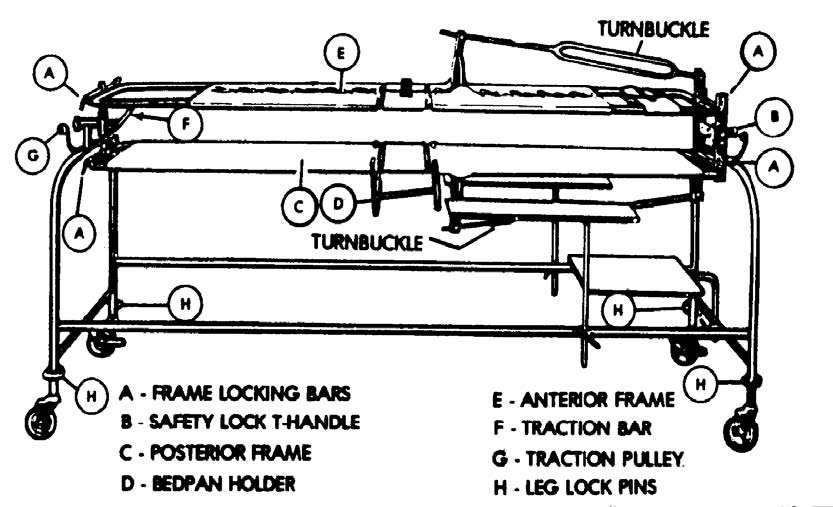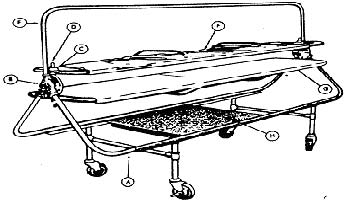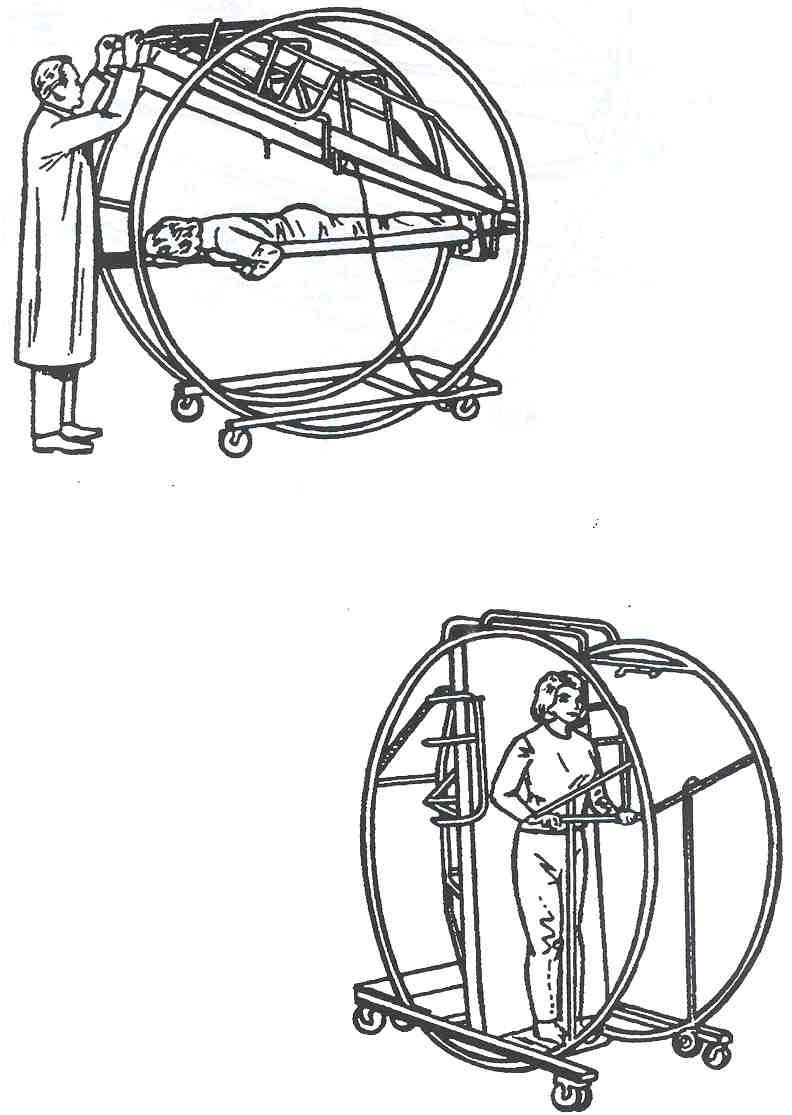1-10
1-10. TYPES OF TURNING FRAMES
a. Double Frames. The Foster reversible orthopedic bed (see figure 1-3) and the Stryker turning frame (see figure 1-4) are commonly used. Both are double frames, which are rotated on the longitudinal (side-to-side)
axis. The operation of both is similar in principle, with variations in the details of preparation for use. Both have a rotary-bearing turning apparatus at each end, which allows traction to be maintained during the turning process. The patient is "sandwiched" between two canvas-covered frames when he is turned. The anterior frame, on which the patient lies prone, is constructed of either two pieces of canvas or one piece of canvas with a perineal cutout. The posterior frame, on which the patient lies supine, is constructed with two pieces of canvas that have an open space between them for the buttocks. A canvas buttocks strap is used between the two sections to keep the buttocks from sagging. This strap is removed only for skin care or bedpan use.
b. Improvised Litter Frames. Two canvas litters, padded with blankets, may be used as anterior and posterior frames when commercially manufactured frames are not available. The frames are placed on sawhorses for greater stability, but may also be used with standard litter brackets. Litter straps are used to bind the two frames together for turning.
Figure 1-3. Foster frame.
A - CART E - OVERHEAD BAR
B - LOCK PIN F - ANTERIOR FRAME
C - LOCKING NUT G - POSTERIOR FRAME
D - PIVOT PIN H - UTILITY TRAY
Figure 1-4. Stryker frame.
c. Circo-Electric Beds. A circo-electric bed (see figure 1-5) is an electrically powered apparatus, which can be used as a turning frame for vertical (end-over-end) rotation. It can also be utilized as a tilt table and for unrestricted gatch positioning.
Figure 1-5. Circo-electric bed.




